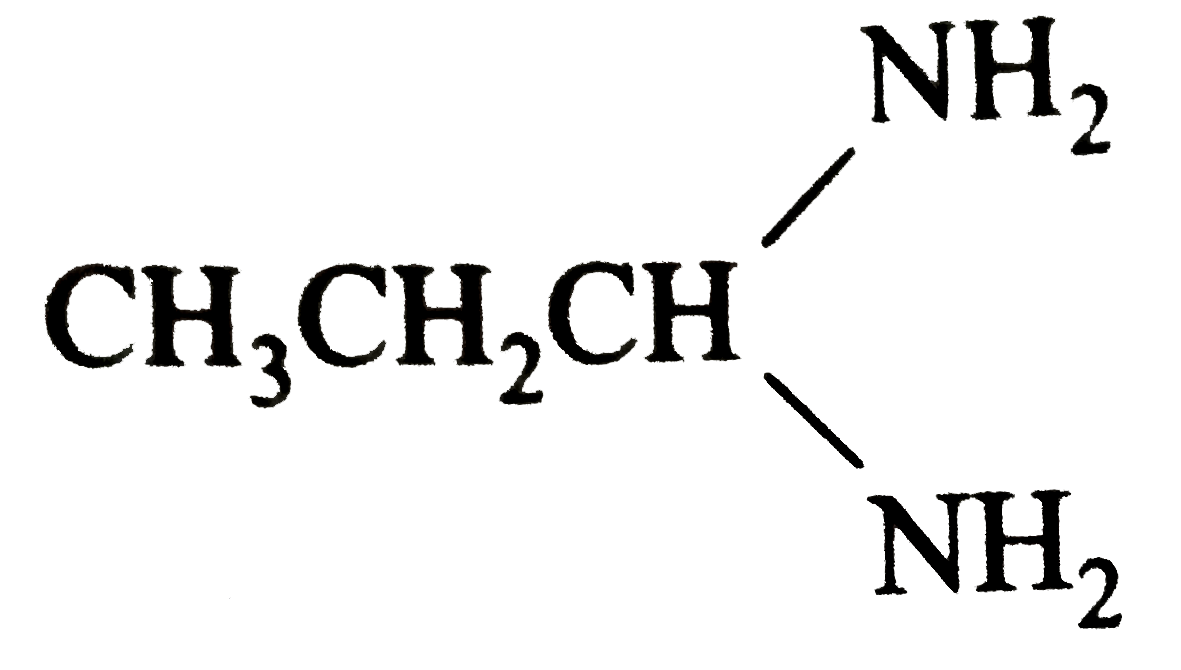In order complete the reaction
1-Pentyne−−→a4-Octyneb−−→cis-4-Octene, a and b will be
(1)(a,b,),(NaNH2,CH3CH2Br,:H2,(one mole )Pd or Ni)
(2)(a,b,),(NaNH2,CH3CH2CH2Br,:H2,(two mole )Pd or Ni)
(3)(a,b,),(NaNH2,CH3CH2CH2Br,:H2,(one mole )Pd or Ni)
(4)(a,b,,),(NaNH2,CH3CH2CH2Br,:BH3,H2O2,OH−)
1
2
3
4
The correct Answer is:C
To solve the problem of converting 1-Pentyne to cis-4-Octene, we need to follow a series of steps involving the use of a strong base and an alkyl halide, followed by a reduction process. Let's break down the solution step by step.
Step 1: Identify the starting material
We start with 1-Pentyne (C5H10), which has the structure:
CH≡C−CH2−CH2−CH3
Step 2: Deprotonation of 1-Pentyne
To create a carbon anion, we need to deprotonate 1-Pentyne using a strong base. The base used here is NaNH2 (Sodium Amide). This will remove a hydrogen atom from the terminal alkyne, resulting in a 1-Pentyne anion:
CH≡C−CH2−CH2−CH3→CH≡C−CH2−CH2−CH2⁻
Step 3: Nucleophilic substitution with alkyl halide
Next, we need to add a three-carbon alkyl halide to the carbon anion formed in the previous step. The alkyl halide we will use is 1-Bromopropane (CH3CH2CH2Br). The nucleophilic carbon anion will attack the carbon in the alkyl halide, leading to the formation of 4-Octyne (C8H14):
CH≡C−CH2−CH2−CH2⁻+CH3CH2CH2Br→CH3−CH2−C≡C−CH2−CH2−CH3
Step 4: Reduction of 4-Octyne to cis-4-Octene
Now that we have formed 4-Octyne, we need to convert it to cis-4-Octene. This is done through a reduction process using H2 in the presence of a catalyst such as Pd or Ni. Importantly, we will use 1 mole of H2 to ensure that we achieve a cis addition, resulting in cis-4-Octene:
CH3−CH2−C≡C−CH2−CH2−CH3+H2→cis−CH3−CH2−CH=CH−CH2−CH2−CH3
Conclusion
The complete reaction sequence is:
1. Deprotonation of 1-Pentyne using NaNH2.
2. Nucleophilic substitution with 1-Bromopropane to form 4-Octyne.
3. Reduction of 4-Octyne using 1 mole of H2 with Pd or Ni to form cis-4-Octene.
Thus, the correct answer is Option 3:
- (a) NaNH2
- (b) CH3CH2CH2Br
- H2 (one mole) with Pd or Ni.
We start with 1-Pentyne (C5H10), which has the structure:
To create a carbon anion, we need to deprotonate 1-Pentyne using a strong base. The base used here is NaNH2 (Sodium Amide). This will remove a hydrogen atom from the terminal alkyne, resulting in a 1-Pentyne anion:
Next, we need to add a three-carbon alkyl halide to the carbon anion formed in the previous step. The alkyl halide we will use is 1-Bromopropane (CH3CH2CH2Br). The nucleophilic carbon anion will attack the carbon in the alkyl halide, leading to the formation of 4-Octyne (C8H14):
Now that we have formed 4-Octyne, we need to convert it to cis-4-Octene. This is done through a reduction process using H2 in the presence of a catalyst such as Pd or Ni. Importantly, we will use 1 mole of H2 to ensure that we achieve a cis addition, resulting in cis-4-Octene:
The complete reaction sequence is:
1. Deprotonation of 1-Pentyne using NaNH2.
2. Nucleophilic substitution with 1-Bromopropane to form 4-Octyne.
3. Reduction of 4-Octyne using 1 mole of H2 with Pd or Ni to form cis-4-Octene.
- (a) NaNH2
- (b) CH3CH2CH2Br
- H2 (one mole) with Pd or Ni.
Topper's Solved these Questions
- HYDROCARBONBook:ERRORLESS Chapter:HYDROCARBONExercise:ORDINARY THINKING (Objective question) (AROMATIC HYDROCARBON)
Explore 128 Videos
- HYDROCARBONBook:ERRORLESS Chapter:HYDROCARBONExercise:CRITICAL THINKING (Objective questions)
Explore 24 Videos
- HYDROCARBONBook:ERRORLESS Chapter:HYDROCARBONExercise:ORDINARY THINKING (Objective question) (ALKENE)
Explore 129 Videos
- HALOGEN CONTAINING COMPOUNDBook:ERRORLESS Chapter:HALOGEN CONTAINING COMPOUNDExercise:Critical Thinking (Jee (Advanced) 2018)
Explore 1 Video
- IONIC EQUILIBRIUMBook:ERRORLESS Chapter:IONIC EQUILIBRIUMExercise:JS Jee Section (JEE Advanced (Numeric answer type question))
Explore 1 Video
Similar Questions
Knowledge Check
The reaction, CH2=CH2+H2Ni−−−−−−→250−300∘CCH3−CH3 is called
AWurtz reactionBKolbe's reactionCSabatier and Senderen's reactionDCarbylamine reaction.In the given reaction Br∣CH2−CH=CH2NaNH2/Δ−−−−−−→(X) X will be
ACH3−C≡CHBCH2=C=CH2CCH3−C≡−⊕CNaDCH2=C=!⊕CHNaWhen CH3CH2CHCl2 is treated with NaNH2, the product formed is
ACH3CH=CH2BCH3C≡CHC D
D
Classify the following reactions in one of the reaction type studied in this unit.
(a) CH3CH2Br+HS−→CH3CH2SH+Br−
(b) (CH3)2C=CH2+HCl→(CH3)2ClC−CH3
(c) CH3CH2Br+HO−→CH2=CH2+H2O+Br−
(d) (CH3)3C−CH2OH+HBr→(CH3)2CBrCH2CH2CH3+H2O
View SolutionPredict the order of reactivity of the following compounds in dehydrohalogenation:
(a) CH3CH2CH2CH2Cl,(CH3)2CHCH2Cl,(CH3)2CH−CH2Br,CH3CH(Br)CH2CH3,(CH3)3C−Br
(b) CH3CH(Br)CH3,CH3CH2CH2Br,(CH3)2CHCH2Br,(CH3)2CCH2Br
View SolutionWhen CH3CH2CHCl2 is treated with NaNH2 the product formed is
View SolutionArrange the following molecules has highest dipole moment ?
(i) CH3Br (ii) CH3CH2Br
(iii) CH3CH2CH2Br
(iv) CH3CH2CH2CH2Br
View SolutionIn the reaction
H−C≡CH(1)NaNH2/liq.NH3−−−−−−−−−−−−−→(2)CH3CH2BrX(1)NaNH2/liq.NH3−−−−−−−−−−−−−→(2)CH3CH2BrY
X and Y are
View Solution

